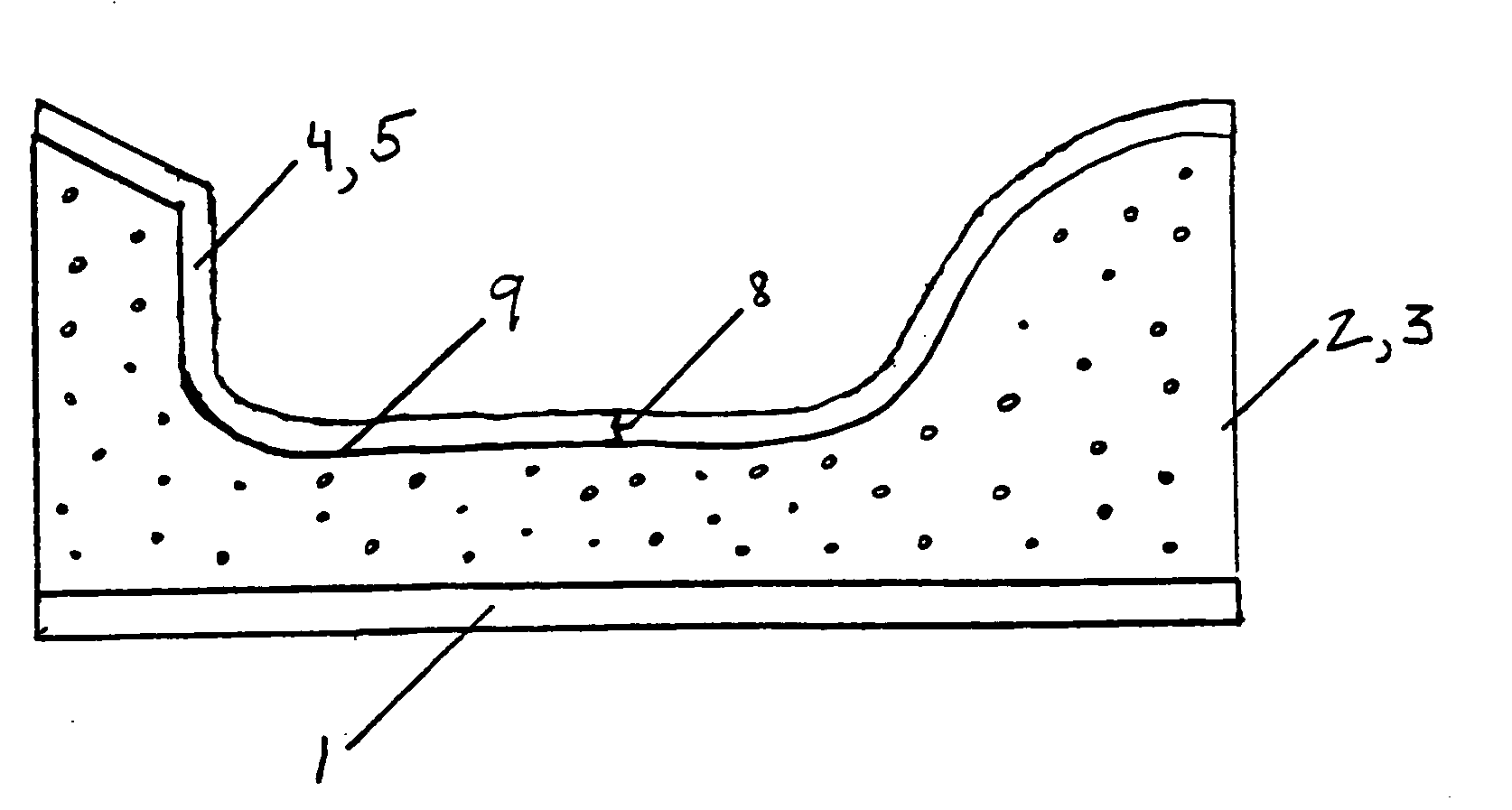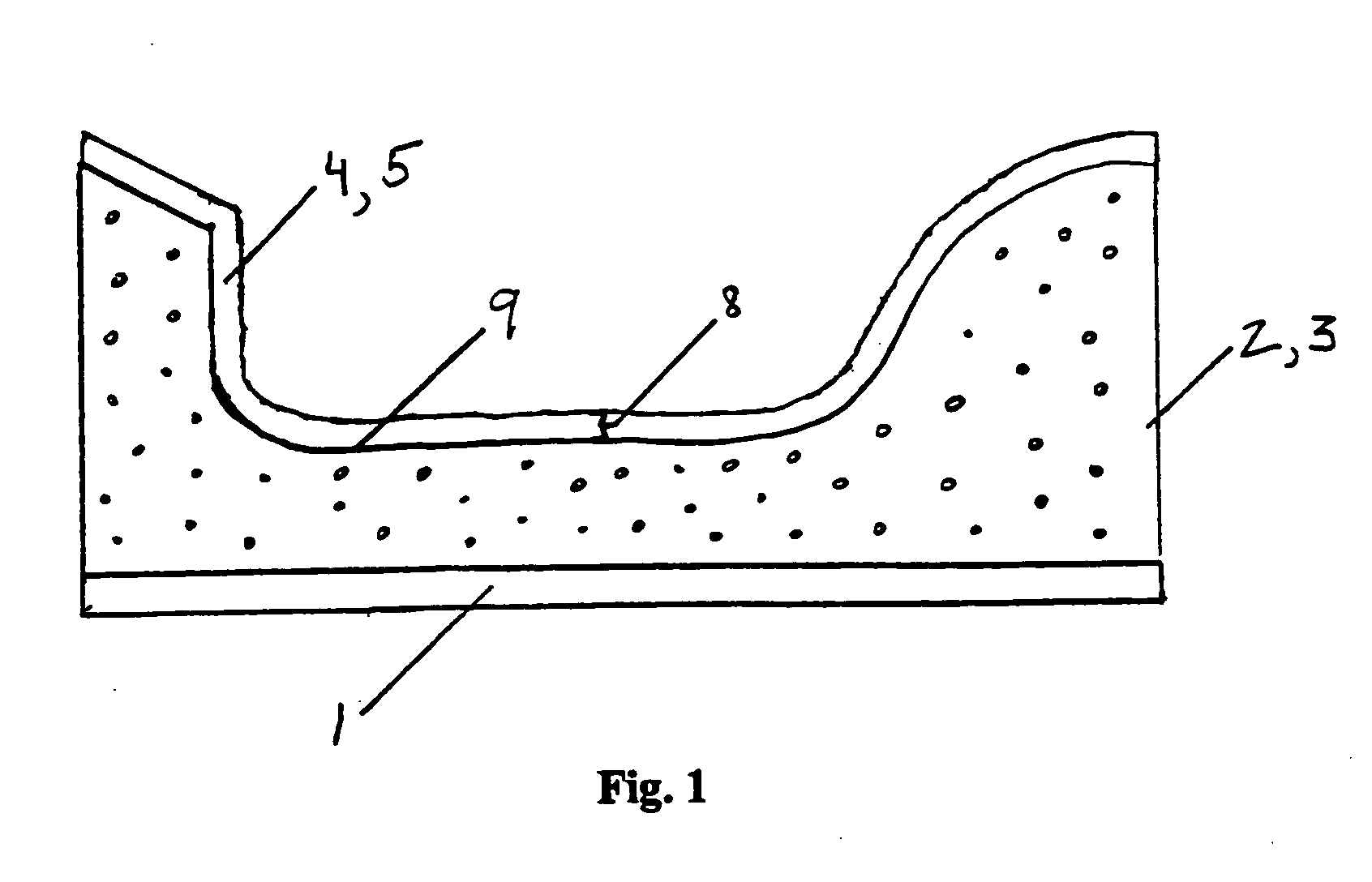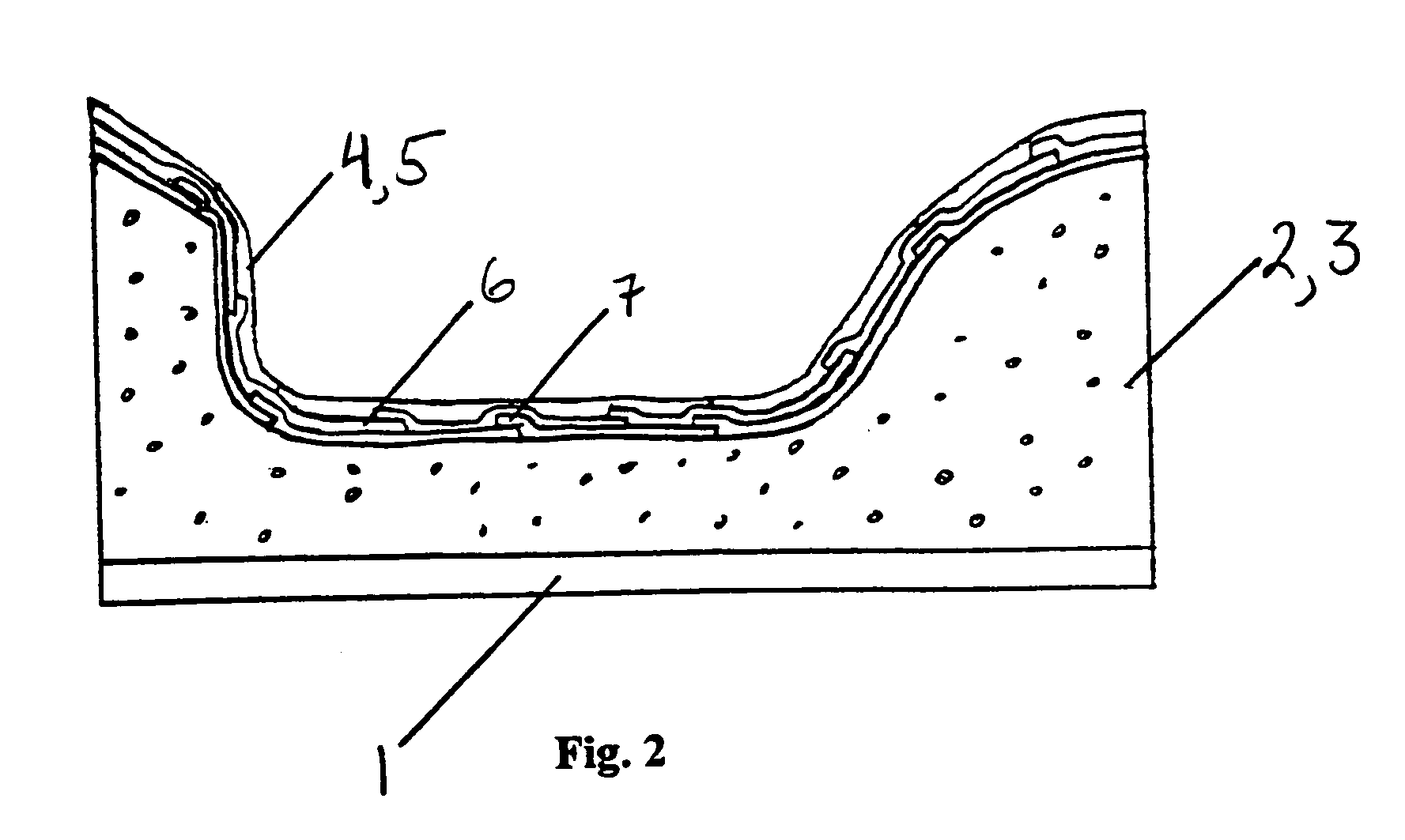Autoclave molding system for carbon composite materials
- Summary
- Abstract
- Description
- Claims
- Application Information
AI Technical Summary
Benefits of technology
Problems solved by technology
Method used
Image
Examples
Embodiment Construction
[0053] As mentioned earlier, the present invention includes a variety of aspects that may be combined in different ways. Several of these aspects are first discussed separately. Contemplated by at least one embodiment of the instant invention is a novel process of thermally molding (e.g., autoclave molding) a part. One reason this new manner of molding may be particularly valuable is its elimination of any the loss of dimension, spatial or shape accuracy of the mold that is attributable to the aforementioned copying inherent in conventional methods. Further, and at least with respect to molding a part having a relatively low coefficient of thermal expansion, this new method may be valuable because it enables sufficient matching of the coefficients of thermal expansion of the mold and the part without the disadvantages of the three conventional methods presented above. At least one embodiment of this method may essentially involve establishing (by rough machining, machining out, sand...
PUM
| Property | Measurement | Unit |
|---|---|---|
| Fraction | aaaaa | aaaaa |
| Fraction | aaaaa | aaaaa |
| Fraction | aaaaa | aaaaa |
Abstract
Description
Claims
Application Information
 Login to view more
Login to view more - R&D Engineer
- R&D Manager
- IP Professional
- Industry Leading Data Capabilities
- Powerful AI technology
- Patent DNA Extraction
Browse by: Latest US Patents, China's latest patents, Technical Efficacy Thesaurus, Application Domain, Technology Topic.
© 2024 PatSnap. All rights reserved.Legal|Privacy policy|Modern Slavery Act Transparency Statement|Sitemap



